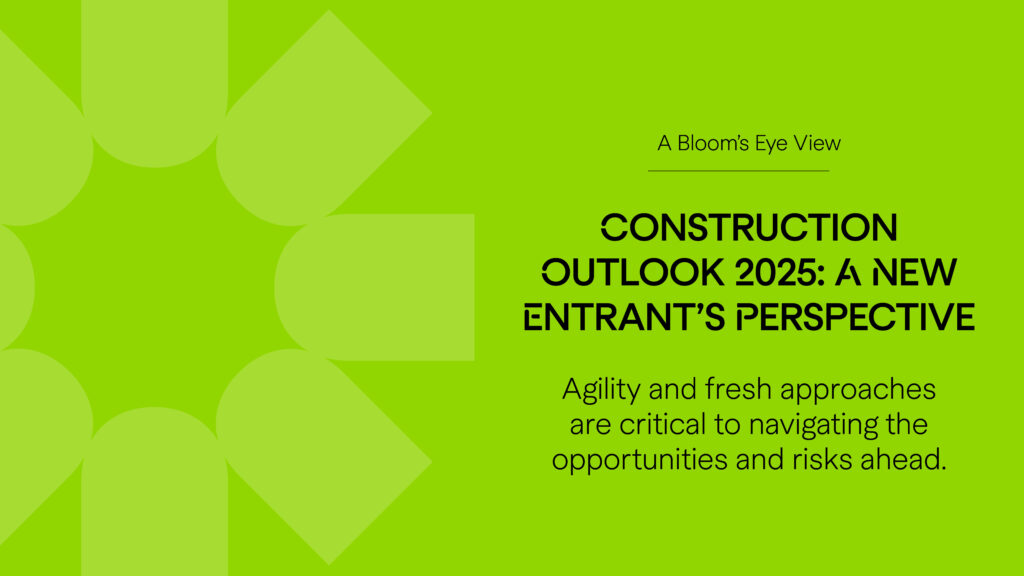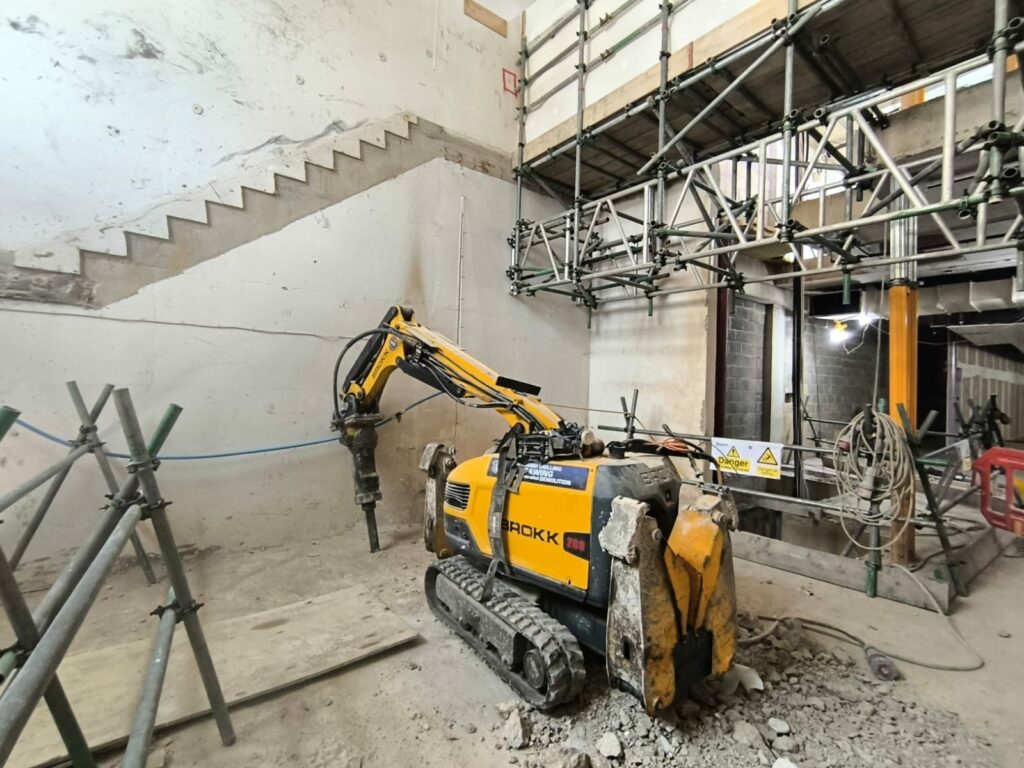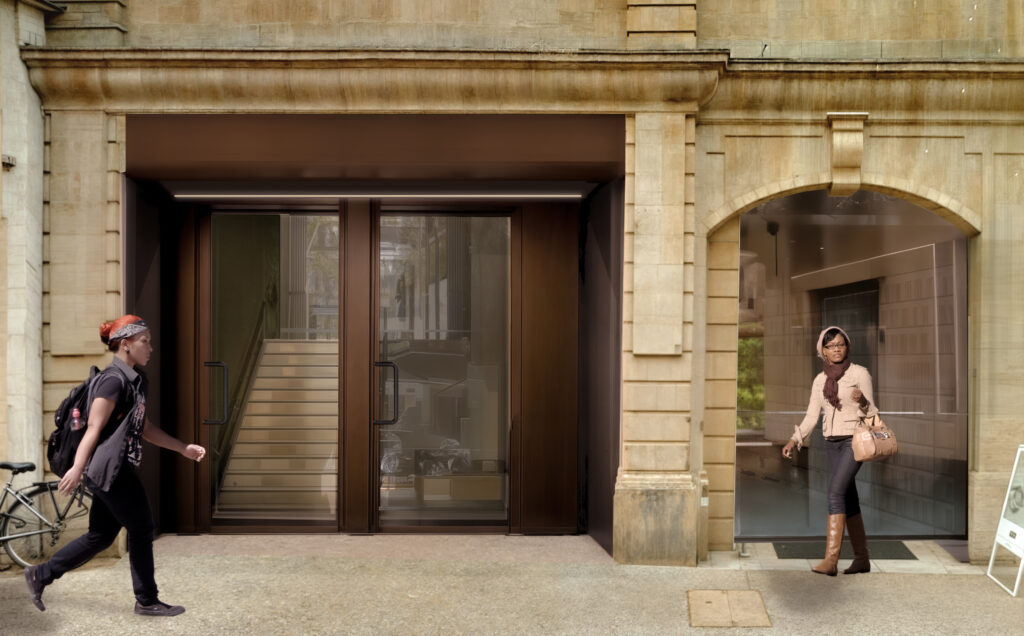By Tom O’Toole, Managing Director, Bloom Construction
I worked in London’s construction sector for 16 years before my business partner John Rowe and I set-up Bloom Construction in May 2023. We did this right in the middle of some of the most tumultuous times that the industry has seen! Whilst establishing ourselves in the London Retrofit and Refurbishment sector, we’ve had a unique vantage point to observe the shifts and challenges in the construction industry as a ‘challenger’ main contractor and new market entrant. The landscape in 2025 is a complex mix of opportunities and risks, shaped by economic conditions, market dynamics, and shifting client expectations. Here’s my perspective on where we are today and how these trends impact both our business and the wider construction sector.
The Current State of the Market
The construction market, particularly for projects under £10m where Bloom focuses, suffers from a notable lack of efficiency and oversight. Small projects often fall victim to mismanagement, a gap we are addressing by leveraging technology to enhance transparency and create operational efficiencies, delivering a “tier 1” experience on every project no matter how small.
That said, we’re operating in an incredibly price-sensitive market. There’s an expectation—bordering on wishful thinking—that pricing can return to pre-Covid levels. This pressure has created a perfect storm, leading to high-profile failures of established contractors like ISG and Beck Interiors. Ironically, despite our proven agility and lack of legacy issues, we still face scepticism as a new business because we don’t have the conventional “three years of accounts”.
These contractor failures leave behind a legacy of unfinished projects that need to be put back on track quickly. This is where we see an opportunity. Thanks to our experienced team and operational capacity, we can mobilise rapidly, often stepping in to stabilise projects — skills we’ve honed through our retrofit expertise.
Emerging Trends and Challenges in Retrofit Projects
The appetite for retrofit projects is growing exponentially, driven by sustainability targets and the push for energy efficiency. However, a shortage of experienced contractors, coupled with inadequate planning and pre-construction work, can quickly lead to overruns in both timelines and budgets. We mitigate these risks by doing an unusually large (but we feel important) amount of programme planning at the pre-construction and, indeed, tendering stage. Crucially then properly tracked during project delivery.
This allows us to build in the time needed for our design partners to make decisions and amendments as the bones of a building (and their issues) reveal themselves during strip out. This approach helps us minimise risk and counterbalances the unrealistic client expectation that contractors can absorb risks through design-and-build contracts without comprehensive site investigations — an unsustainable practice. Risk-sharing is a critical conversation we need to have as an industry. For retrofit projects to succeed, collaboration and clear delineation of responsibilities are key.
Interestingly, our retrofit expertise has opened doors to new-build projects where the contractor has gone into administration. The process of re-engaging teams and addressing inherited challenges is remarkably similar to retrofit work, and we’re increasingly being asked to step into this space.
Tendering and Procurement: What’s Changing?
One clear trend is the selective nature of contractors and subcontractors in the current market. In the same way that clients have experienced contractors declining to tender, we’ve had subcontractors decline to quote on projects, particularly where the scope is unclear, or the project is too small. That said, our strong relationships and commitment to timely payments ensure we maintain a reliable pool of subcontractors.
Clients’ expectations around proposals remain a challenge. It’s not uncommon to be asked to tender when detailed proposals have been requested from more than six contractors without an adequate budget in place. Even when we submit proposals, decisions are often delayed, only for the project to demand immediate mobilisation when greenlit. This disconnect between planning and execution adds strain to an already tight process.
Economic and External Influences
The lingering impacts of Brexit, the war in Ukraine, and the pandemic continue to influence the market. The second half of last year saw decision-making slow as clients grappled with economic uncertainty. Inflation and rising employment costs—exacerbated by changes to National Insurance—are pushing prices upward, though material costs have stabilised somewhat. Whilst I am personally happy to see the back of the chaos of the Tories, Labour have had a rough start, and their current economic offering looks more like a bet than a plan or strategy.
The impact of Grenfell continues to be felt and challenges developers are having around getting through Gateway 2 and Gateway 3 will have an impact upon the market as some developers are likely to shift their focus away from high-risk buildings until certainty and speed of approvals can be relied upon.
Despite these pressures, we remain focused on resilience. By avoiding reliance on outdated sub-contractor framework agreements and instead using live quotes from our subcontractors, we mitigate risks of tender inflation and maintain accurate pricing.
Sustainability and Social Value
Environmental, Social, and Governance (ESG) considerations are non-negotiable for modern construction both as an ethical business consideration and as a requirement for planning. At Bloom, we use tools like QFlow to track site activity and minimise waste, and we conduct pre-demolition audits to ensure materials are reused and recycled wherever possible.
On the social value front, we’ve embedded this ethos into our business model. As an ethical contractor, we commit to always having at least one not-for-profit project in progress. Projects like The Women’s Museum and ongoing support of The Soup Kitchen reflect our belief that creating social value isn’t just a contractual obligation — it’s part of who we are.
Looking Ahead: The Role of Mid-Sized Contractors
With the exit of players like ISG and Lendlease from key market segments alongside the new Labour government’s ambitious housebuilding targets and their plans to invest heavily in infrastructure, we are also likely to see some contractors shift their focus as mid-sized contractors will need to step up to meet demand. This shift creates opportunities for agile businesses like ours, especially in the smaller projects range where we excel.
As we move forward, the construction market will continue to demand innovation, collaboration, and resilience. By staying true to our values, leveraging technology, and building strong partnerships, we’re confident in our ability to thrive in 2025 and beyond.
2025 will be all about building a more efficient, sustainable, and equitable future for the construction industry.







